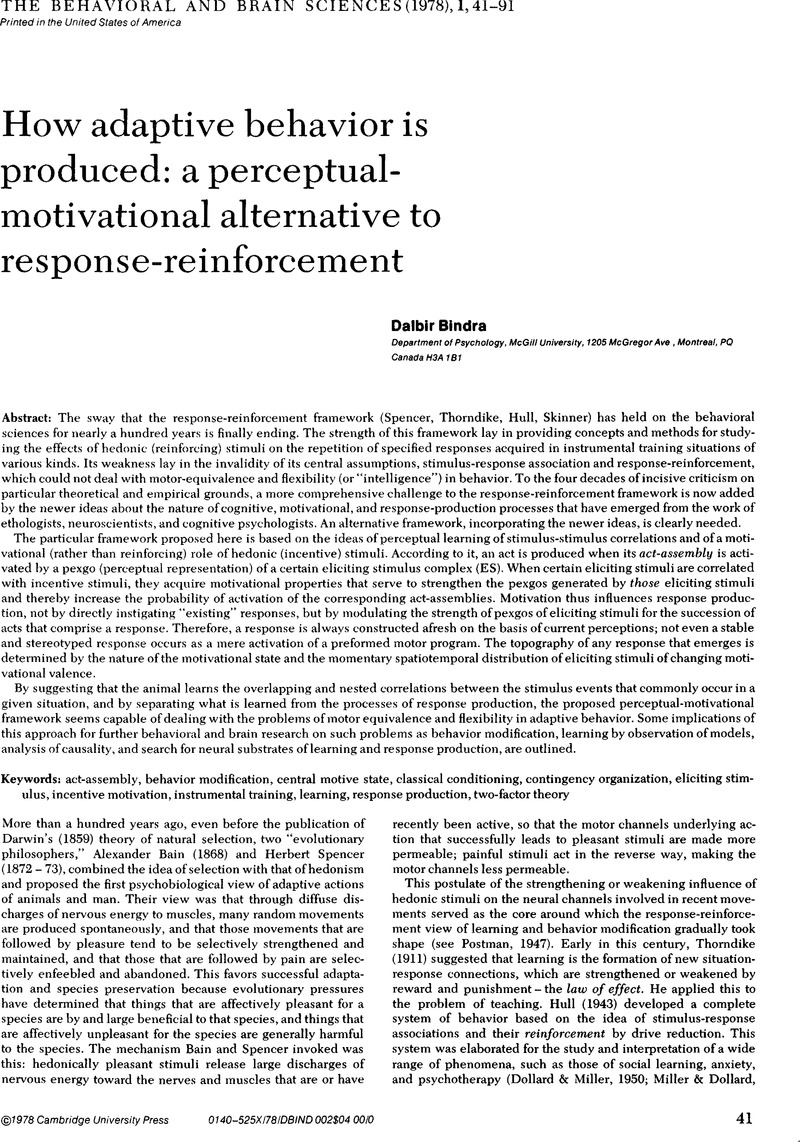No CrossRef data available.
Article contents
Signal learning and response learning
Published online by Cambridge University Press: 04 February 2010
Abstract
An abstract is not available for this content so a preview has been provided. Please use the Get access link above for information on how to access this content.

Information
- Type
- Open Peer Commentary
- Information
- Copyright
- Copyright © Cambridge University Press 1978
References
REFERENCES
Moore, B. R. The role of directed Pavlovian reactions in simple instrumental leaning in the pigeon. In Hinde, R. A. and Hinde, J. S. (Eds.), Constraints on learning. New York: Academic Press, 1973. Pp. 159–188.Google Scholar
Konorski, J.Integrative activity of the brain. Chicago: University of Chicago Press, 1967.Google Scholar
Kupalov, P. S. The formation of conditioned place reflexes. In Cole, M. and Maltzman, I. (Eds.), Contemporary Soviet psychology. New York: Basic Books, 1969. Pp. 735–762.Google Scholar
Stepien, I. and Stepien, L.The effects of bilateral lesions in precruciate cortex on simple locomotor conditioned responses in dogs. Ada Biologiae Experimentalis, 1965,25:387–394.Google Scholar
Zener, K.The significance of behavior accompanying conditioned salivary secretion for theories of the conditioned response. American Journal of Psychology, 1937,50:384–403.CrossRefGoogle Scholar

